Choice Modeling.

Introduction Conjoint Analysis: The Basics Main Applications of Conjoint Analysis Webinar: Introduction to Conjoint Design Experimental Design for Conjoint Analysis: Overview and Examples Writing…
Continue reading
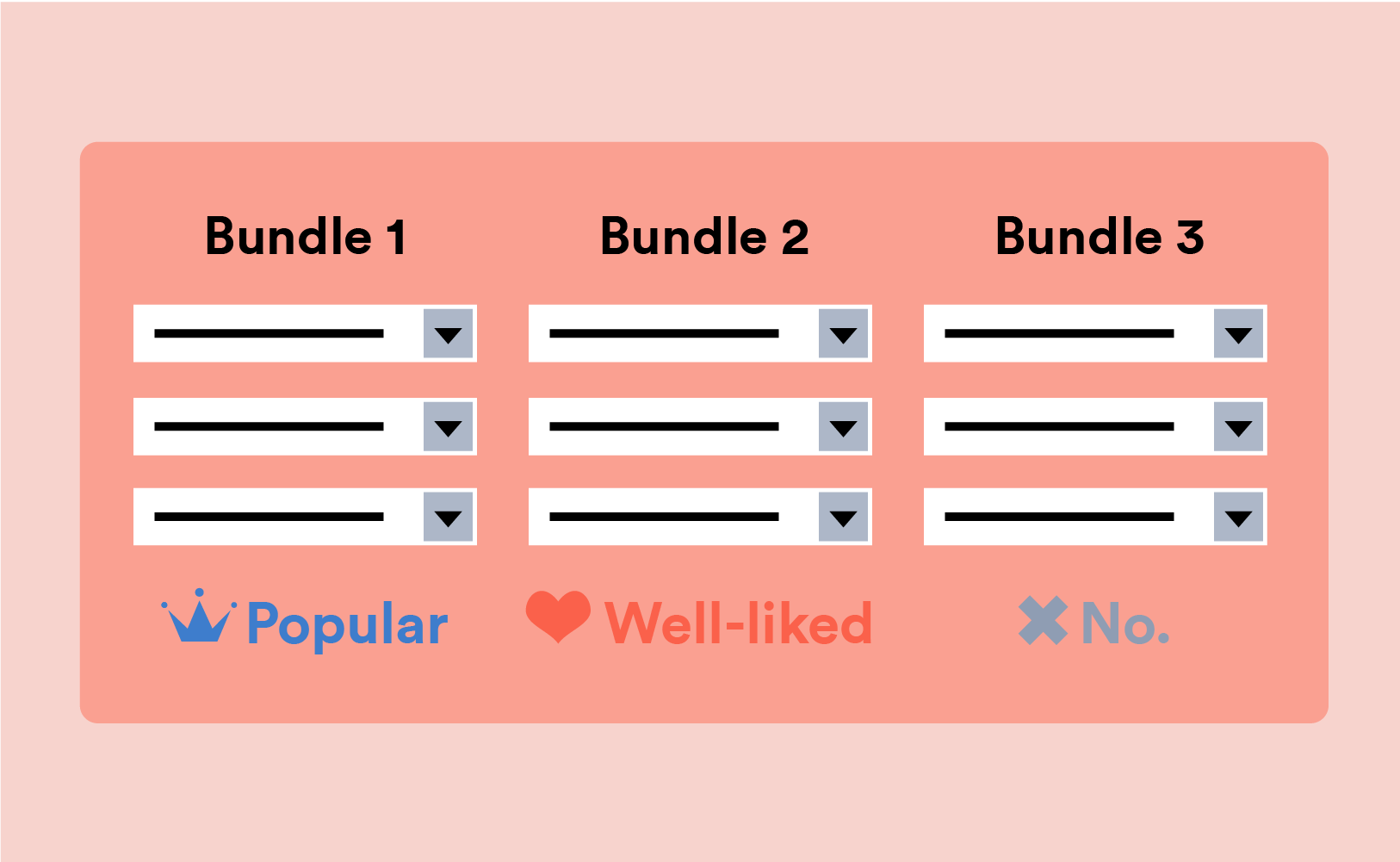
This one is a bit more complicated than the first five techniques we’ve talked about, but the idea of this technique is to find people’s…
Continue reading
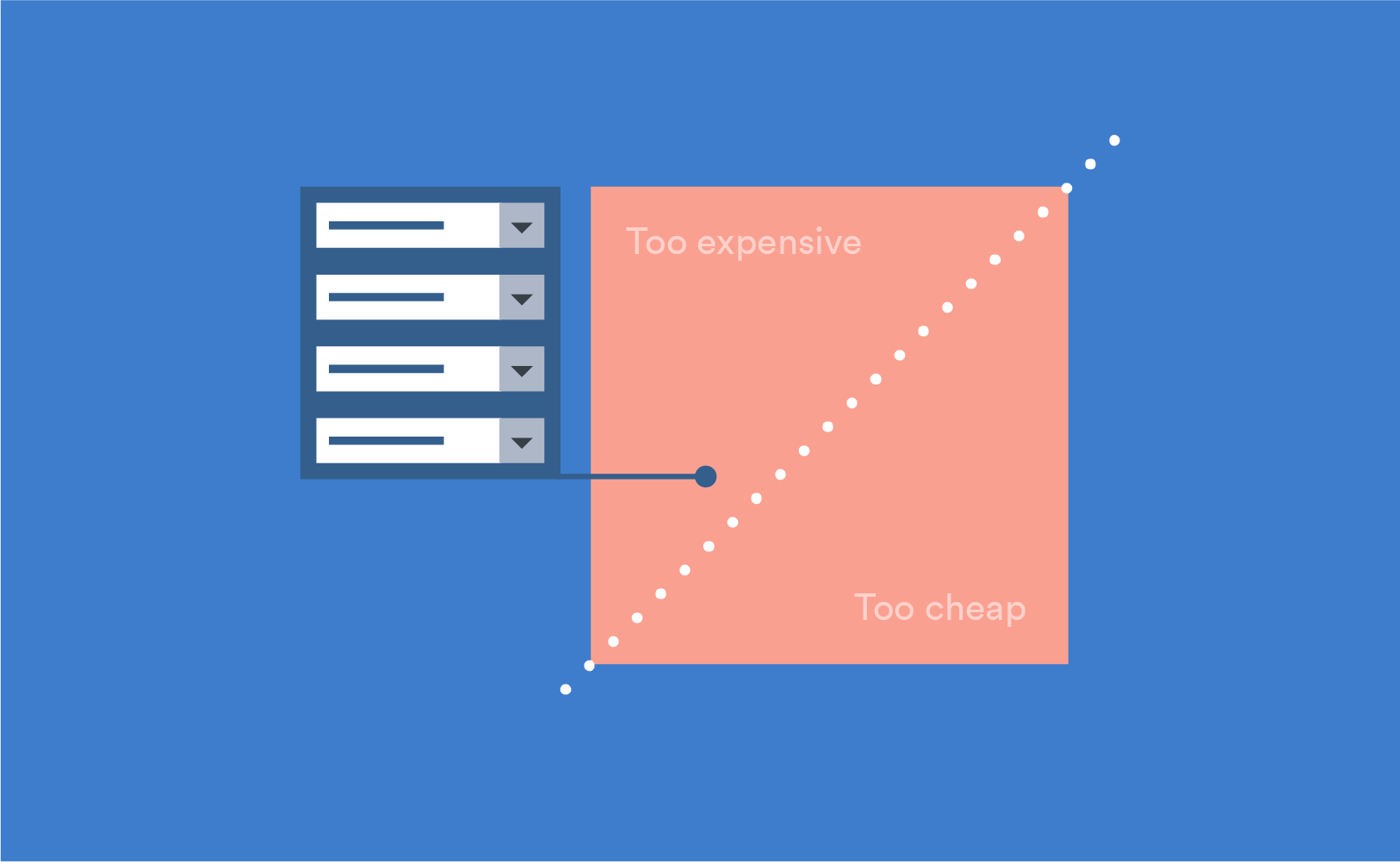
The value equivalence line is a useful concept for setting pricing strategies in markets where products vary in terms of their overall levels of benefits…
Continue reading
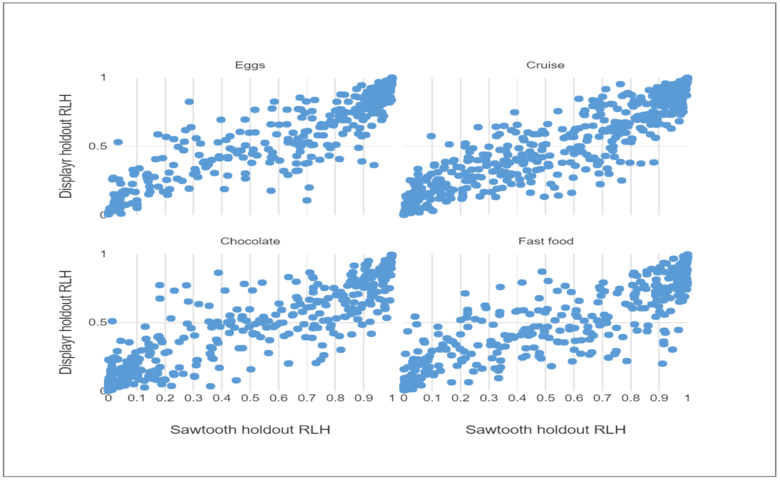
In this post, I compare the ways Displayr and Sawtooth implement the Hierarchical Bayes (HB). I used both an in-sample data and holdout data for testing.
Continue reading
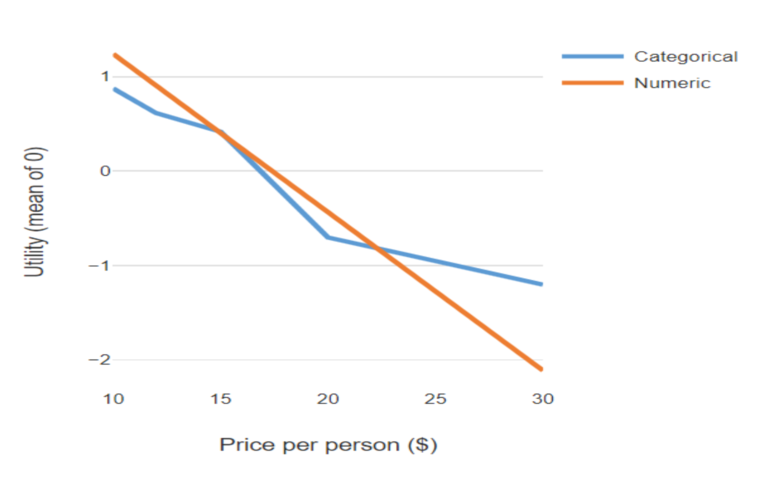
Choosing whether to use a numeric or categorical variable in a Conjoint Analysis is a difficult decision to make. With Displayr, there is a straightfoward way t...
Continue reading

Example: choice-based conjoint analysis utilities Consider the utilities plot below, which quantifies the appeal of different aspects of home delivery. If you hover over the mouse plot…
Continue reading
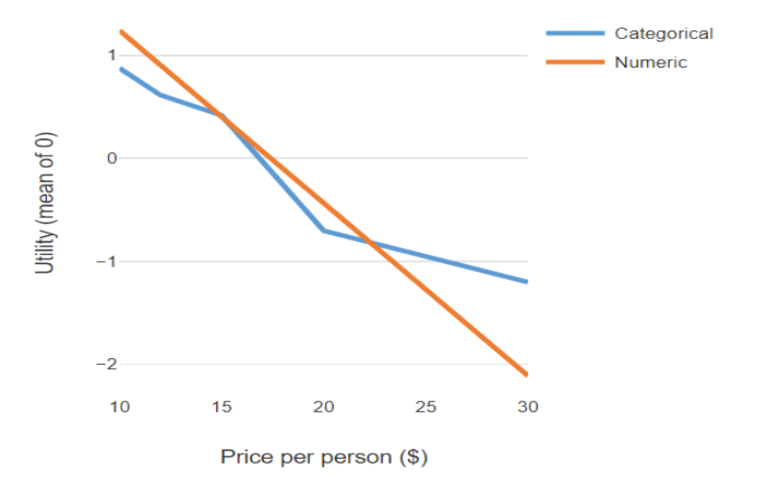
The difference between a numeric and categorical price attribute The chart below illustrates the the implications of treating price as being categorical versus numeric. When…
Continue reading
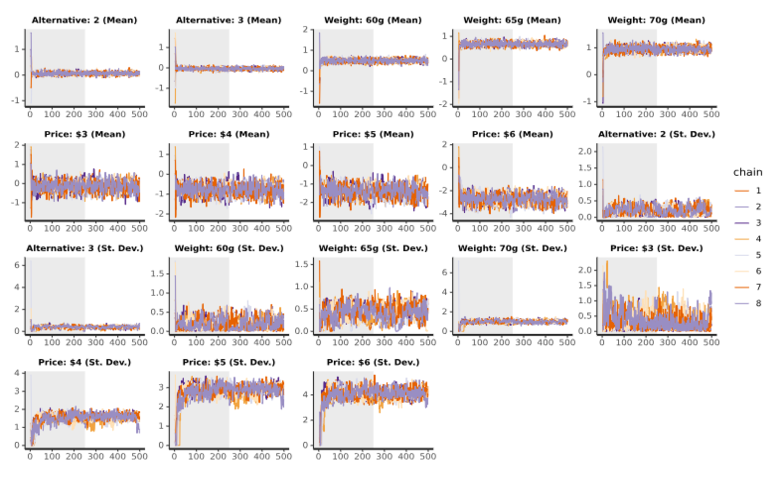
Please read How to Use Hierarchical Bayes for Choice Modeling in Displayr prior to reading this post. There are a number of diagnostic tools that you…
Continue reading

There are many ways you can increase the chance that the forecasts from your choice model are accurate. In this post, we take you through 12 of them.
Continue reading

While choice-based conjoint analysis represents one of the more sophisticated techniques used in market research, presentation of its results commonly consists only of a simulator,…
Continue reading

The main output from conjoint analysis is typically a choice simulator. However, substitution maps better show the underlying preferences.
Continue reading

Indifference curves are a way of showing relative preferences for quantities of two things (e.g., preferences for price versus delivery times for fast food). This…
Continue reading

Working out the sample size required for a choice-based conjoint study is a mixture of art and science. The required sample size depends on many factors.
Continue reading

This post gives you ten top tips for writing your questionnaire for your choice modeling study. It's a must read for all those conducting choice-based conjoint....
Continue reading
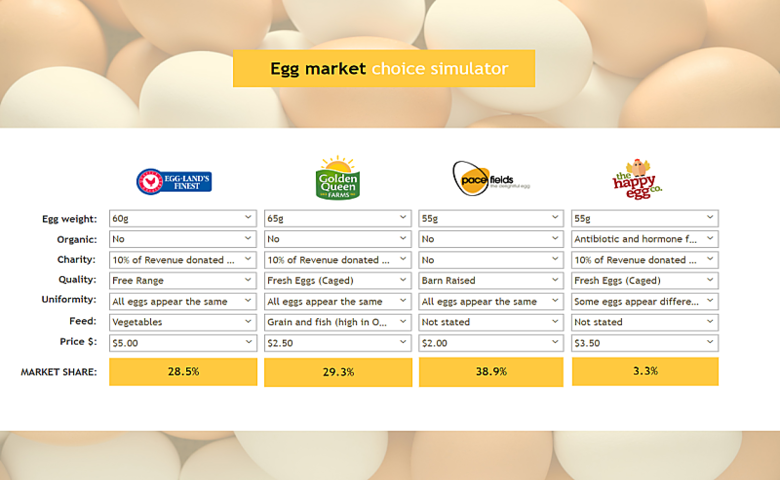
Want to know when and why you would do choice modeling? Discover all about the main applications of choice modeling and choice-based conjoint here!
Continue reading

Choice modeling can be tricky. Luckily we've covered the basics so you can learn everything choice modeling and choice-based conjoint analysis.
Continue reading

Alternative-specific choice model designs are used where alternatives are described by different qualities, rather than all attributes being the same.
Continue reading

The Efficient algorithm is a special case of the more general Partial Profiles algorithm. It results in faster computation times.
Continue reading

In partial profiles designs, a specified number of attributes are held constant in each question. This reduces the cognitive effort for respondents.
Continue reading
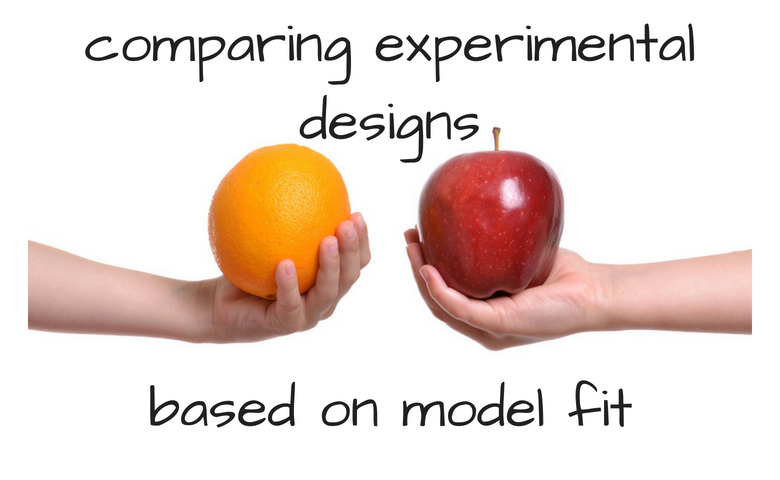
There are many ways to generate an experimental design. In this post, I compare various algorithms for generating choice model designs based on model fit.
Continue reading
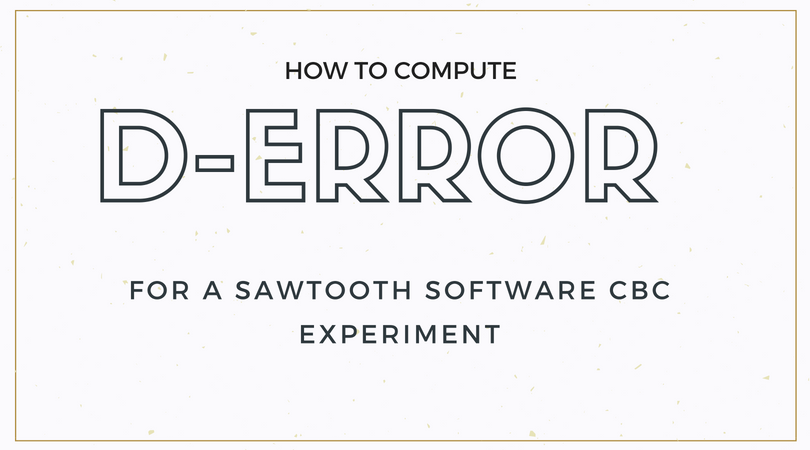
D-error summarizes how good a design is at extracting information in a choice experiment. Find out how to compute it fo a Sawtooth Software CBC Experiment.
Continue reading

I'll show you four algorithms you can use to create the questions for your choice model experimental design. These include random, shortcut and balanced overlap...
Continue reading

A choice-based conjoint analysis is a tool used in market research and other fields to determine how consumers choose between competing products.
Continue reading

This article gives an overview of D-error and demonstrates how to compute D-error by working through an example. Concepts in this article are covered in…
Continue reading

In this post I explore the implications of using hierarchical Bayes versus using latent class analyis for data which contains segments.
Continue reading

Assessing design quality in terms of balance can involve hundreds of numbers. What if I showed you a way to use a few key metrics to summarize your design quali...
Continue reading
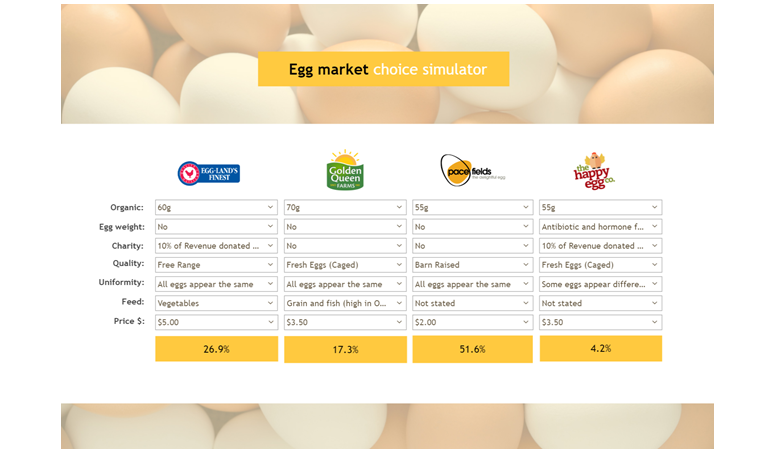
A worked example is used to show how to create an online choice simulator (conjoint simulator). Calculations are done in R & it is hosted in Displayr.
Continue reading

Experimental designs can be scary. Small mistakes ruin everything. I explain the process I use when doing a rough-and-ready check of an experimental design.
Continue reading

